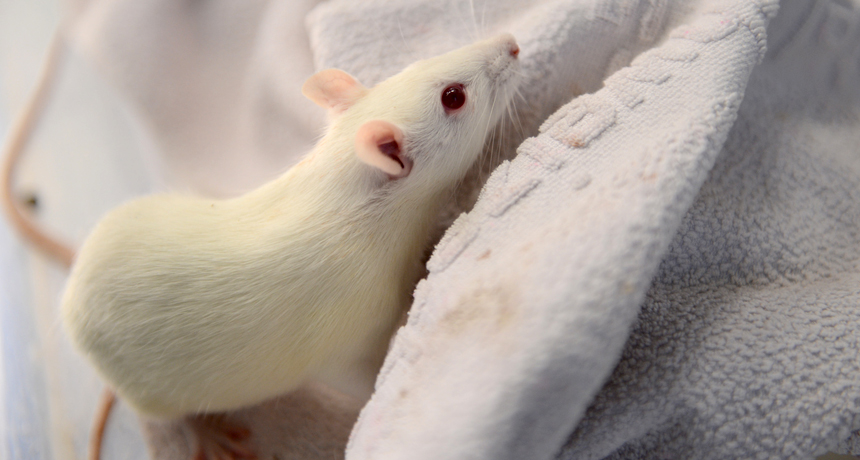Brain stimulation restores movement in rats with spinal cord damage
Implanted electrodes might help paralyzed humans walk

ON THE MOVE Stimulating the brain helped rats with spinal cord injuries move normally.
Antonio Schmandke
- More than 2 years ago
With the help of electrodes implanted in the brain stem, rats with spinal cord injuries can regain the ability to walk and swim with ease, scientists report October 23 in Science Translational Medicine.
It’s not yet clear whether the technique would work in people with paralysis, but the research represents a new lead in the search for badly needed therapies, says study coauthor Lukas Bachmann of the University of Zurich.
The results complement recent work that restored movement to paralyzed rats by stimulating neurons in the spinal cord (SN: 6/30/2012, p. 5). Instead of targeting the spine, the new study focuses on the brain.
Most spinal cord injuries leave some nerve fibers unscathed. The brain stimulation technique relies on this small population of fibers to carry an amplified “move” message from the brain to formerly paralyzed legs and paws.
Bachmann and his team studied rats with partially severed spinal cords that caused them to walk with difficulty. When electrodes stimulated a part of the brain stem called the mesencephalic locomotor region, the rats began walking almost normally. The animals also showed big improvements in swimming.
A separate group of more severely injured rats, akin to people with completely paralyzed limbs, showed more modest improvements. In these rats, electrical stimulation elicited twitches in formerly nonresponsive limbs. Though minor, such twitches might be refined into more useful movement with physical therapy, says Bachmann.
At moderate power levels, the stimulation enabled what seemed like voluntary walking in animals with less severe spinal cord damage — they could walk toward their familiar “home cage.” This level of stimulation would allow movements, but not force them. With the highest stimulation, the rats’ movements became involuntary.
A therapy based on brain stem stimulation might be useful for both temporary rehabilitation and as a permanent fix, much like a pacemaker, says clinician Armin Curt of the Spinal Cord Injury Center at the University of Zurich’s Balgrist University Hospital, who was not involved in the research. He cautions, though, that the therapy might not translate from rats to humans.
Bachmann and his team plan to clarify which cells in the mesencephalic locomotor region are responsible for the restored movement and to test the rats on more difficult terrain.






